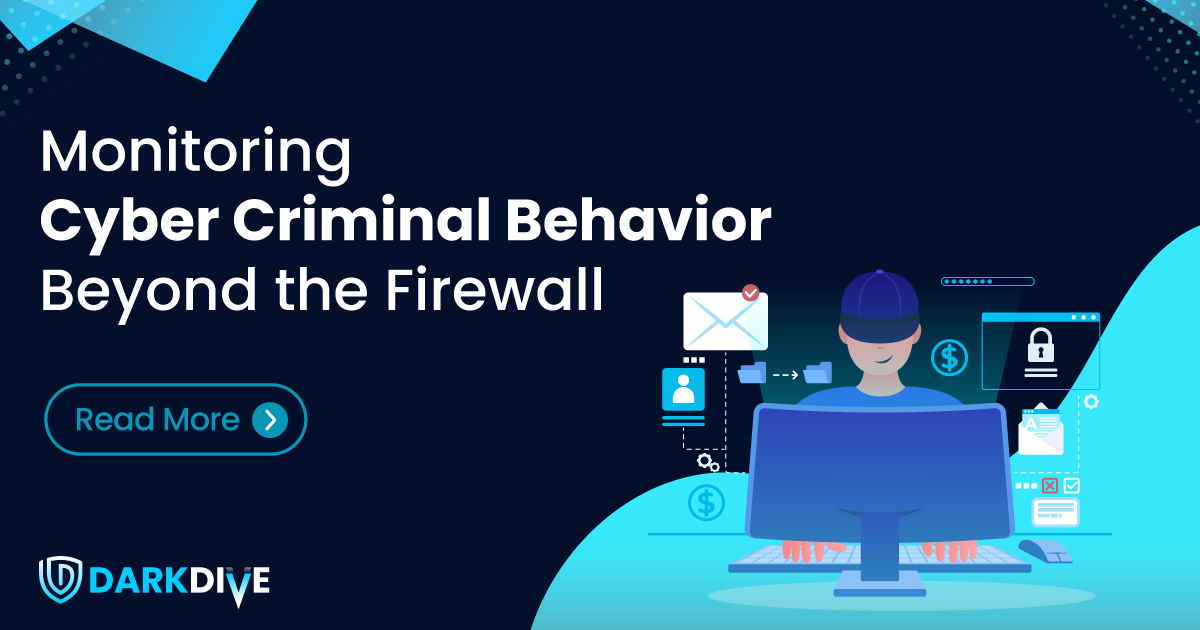
Because modern threats don’t always knock on the front door.
Cybercriminals aren’t always lurking in shadows; they’re often talking, trading, and preparing in plain sight. While your firewall and endpoint security keep watch on what enters your system, threat actors are active well outside your network’s borders. They share attack methods, leak stolen data, test malware, and even recruit collaborators on platforms most businesses don’t monitor.
From dark web marketplaces and private Telegram channels to code-sharing forums and surface web paste sites, these digital backrooms host a steady flow of chatter. And if your brand, tools, or industry gets mentioned there, it usually means someone’s gearing up for something. That’s why monitoring cybercriminal behavior beyond your firewall isn’t optional anymore—it’s essential intelligence.
The Dark Web
For years, the dark web has been the go-to marketplace and message board for cybercriminals. It’s where data breaches are monetized, ransomware kits get licensed out, and zero-day exploits are quietly sold to the highest bidder. But that’s not all.
These forums also act as early warning systems if you know what to look for. You might spot chatter about specific industries being targeted, credentials for sale tied to your company or vendors, or new phishing kits built to bypass your filters. You’re not just getting a heads-up. You’re getting a head start.
Other Places Attackers Leave Tracks
Threat actors aren’t limited to onion links and encrypted marketplaces. Many operate openly because they can. Their footprints show up in unexpected places:
- Paste sites and social media: Phishing templates, test attacks, or stolen credentials may be shared for quick visibility.
- GitHub and code repositories: Malicious scripts or backdoors occasionally surface in public code drops—sometimes as part of insider leaks.
- Domain scanners and lookalike sites: Impersonation domains and suspicious infrastructure often pop up weeks before an actual phishing campaign.
- Telegram, Discord, and closed chats: These serve as coordination hubs for attack planning, ransomware groups, and data trading.
The activity isn’t loud, but it’s frequent. And when you’re watching the right channels, you can catch the signs before the breach.
What Attackers Reveal—Often Without Realizing It
Even the most cautious cybercriminals slip up. When they promote stolen data or tools, they tend to reveal more than intended:
- Proof-of-access posts featuring admin panels or VPNs
- Pricing for access to companies based on sector or size
- Screenshots of internal dashboards (from breached orgs)
- Chatter about which malware works best on specific industries
These clues help you answer important questions: Are we already on someone’s radar? Are our peers getting hit by a specific exploit? Is someone testing tools designed to target our infrastructure?
What DarkDive Adds to the Equation
Monitoring the open web, deep web, and dark web manually is nearly impossible. That’s where DarkDive comes in. DarkDive continuously scans hidden forums, encrypted chat groups, dark web listings, and even suspicious domain activity. Whether it’s your brand name in a breach post, an insider request in a closed Telegram group, or stolen credentials popping up in a dump—we surface it fast.
We connect these scattered signals and deliver clear, real-time alerts to your security team. You won’t just react to an incident—you’ll spot it coming.
Conclusion
Most modern attacks don’t start with a firewall breach. They start with a post, a listing, or a conversation somewhere your tools aren’t watching. By monitoring cybercriminal behavior across the broader digital ecosystem—from shady forums to public code drops—businesses can move faster, patch smarter, and defend better. Because in today’s threat landscape, knowing where the next attack might come from is often your best defense.
